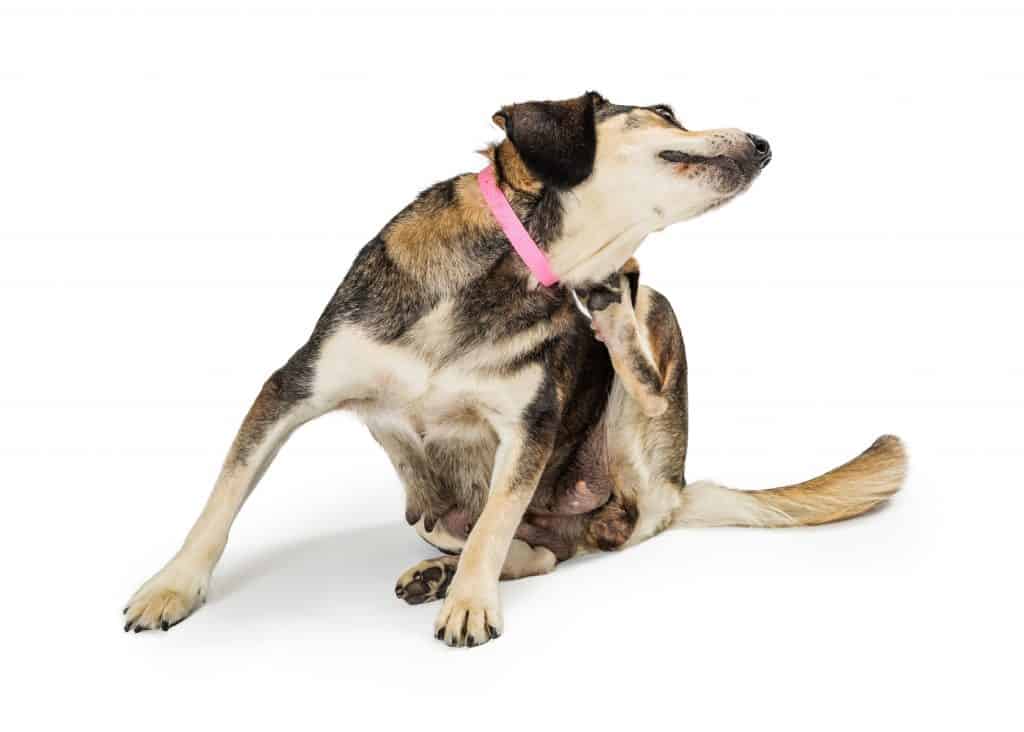Flea and tick shampoos often have pyrethrin in them, which is an insecticide derivative from the chrysanthemum, and are effective for killing insects. Pyrethrin by itself usually won’t kill fleas and ticks, but will temporarily incapacitate them. Pyrethrin is usually used in combination with some other chemical; however, when using any pesticide you need to be aware of the potential side effects.
Some animals are extremely sensitive to chemicals and you need to be ready to wash it off immediately if you see any symptoms such as excessive drooling, neurological symptoms such as jerking, or behavior that is otherwise out of character.
In addition, these chemicals have the potential to poison you. When the label says to wear rubber gloves before applying to animals, and has warning labels on it about contact with your skin, you have to wonder why, if it’s that harmful to you, you are putting it on your pet.
Many groomers are now suffering the ill effects of toxic flea dipping that was so common years ago. Autoimmune diseases are a common issue among groomers that used to use such chemicals regularly.
The movement now is toward safer, more natural products such as d-limonene, which is citrus oil that kills bugs. There are also herbal flea shampoos that contain ingredients such as oils of orange, cedar wood, citronella, eucalyptus, and neem oil. These are safer for you and for the pet, although anyone or any pet can have a reaction to any sort of chemical.
With the spot-on products of today, such as Advantage and Frontline Plus, there really should be no need to use flea and tick shampoos on the dog. Shampooing will also wash away the skin oils in which the active ingredient is dispersed. Be sure to read the product directions regarding bathing dogs that have spot-on products applied.
Any good degreasing shampoo, or even dish soap diluted fifty-fifty with water, put on a dog’s dry coat and left for about ten minutes should kill any fleas or ticks on the pet, without the after effects of the pesticides. Be sure to rinse very well afterward and use a good conditioner because these products dry out the hair as well as the fleas exoskeleton.
Rinse and Rinse
If you are like most people, you will overdo shampooing of your dog by applying too much shampoo and not diluting it. Why do we do this? People are programmed to make a lot of suds—every shampoo commercial on TV shows someone in the shower with a head full of rich suds. The problem is, most shampoos are so concentrated that it only takes a little bit to get the entire dog clean.
You don’t need to buy a 16-ounce bottle of shampoo and use half the bottle on one bath! If you do, then the problem starts: itching, scratching, and hot spots. But why? You gave your dog a good bath and he’s very clean now. Well, dogs are very hard to rinse well. It’s easy to miss a spot underneath them or behind an ear and since the shampoos are so thick and we overdo it, we don’t rinse the dog long enough to get all the shampoo out Then it dries and the fun begins.
How can I get rid of all the suds?
Rinse the dog well with cooler water and follow up with conditioner or creme rinse. Conditioner kills suds, as fabric softener does in your washing machine.
Owners sometimes bring dogs into their groomer complaining that the dog is scratching and they think the dog may have fleas. But when the groomer puts her in the tub and runs clear water on her to wet her down, there are suds in the tub! The problem isn’t fleas, it’s that she wasn’t rinsed well at home. It’s imperative that you rinse your dog very well all over so that she won’t get itchy and start scratching herself.
No-Rinse Shampoos
There are some no-rinse formulas; many people use them on cats or for a quick bath without the water. You can spray it on, rub it in, and wipe it off with a towel. These are great for touch ups or spot removal, but bathing is more than just a quick wipe, it’s about dander removal, oil removal, and no matter what you put on hair, there is bound to be buildup that you eventually need to remove.

